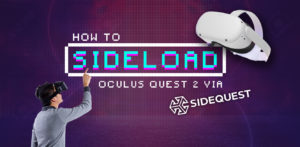The explosive popularity and success of Virtual Reality over the last few years is nothing short of mind-blowing. With this success comes a bit of a double-edged sword for consumers though. On the one hand, you have competitors in the VR space producing amazing technological advances in the hardware while also producing amazing VR experiences for all users at reasonable prices.
On the other hand, though, this expansion of growth and choice within the VR space can make it difficult for us the buyers to decide what hardware to purchase or the next investment to make. Fear not! We are here today to help you make an informed decision on which VR headset you should buy for your PC. From the budget conscious to the early adopters with deep pockets, we will cover every suitable headset currently on sale today. So let’s jump straight into it shall we?
Meta Quest 2
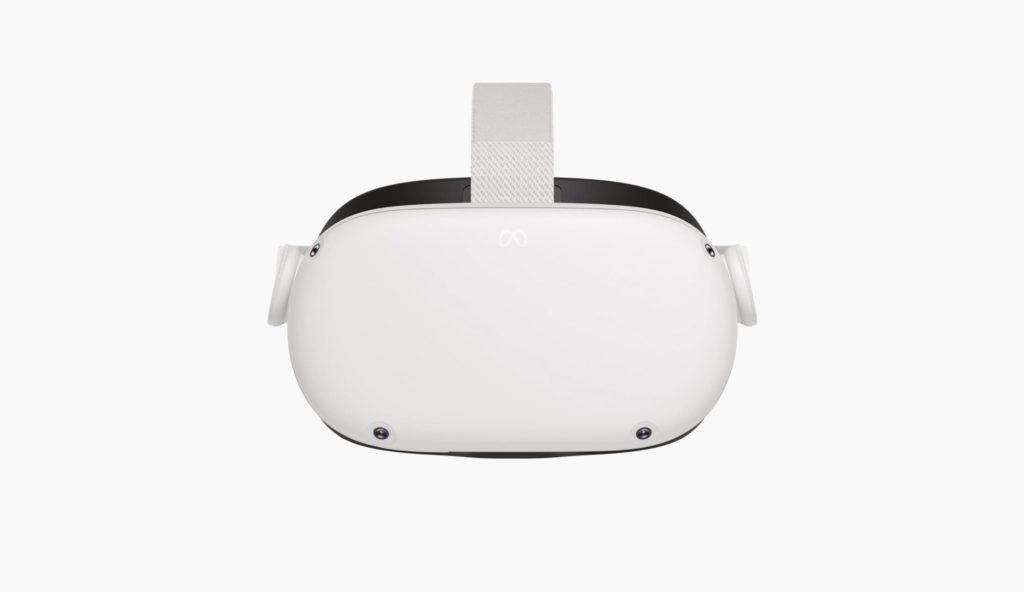
Photo credit: https://www.meta.com/
So I start our guide to the best VR headset for PC with a stand-alone unit that isn’t meant for PC. What is the deuce? Bear with me folks as for those among us who want value and flexibility for our money, there simply is no better currently on the market. The Quest 2 is of course a stand-alone unit meaning you don’t need a PC to play it. However, once connected to your PC, whether wired or wireless, the Meta Quest 2 shines and is incredibly cost-effective.
Once connected to your PC and running SteamVR, your Quest 2 can stand toe to toe with most VR headsets on the market. Sure its lenses and field of view may be lacking when compared to some of the top-tier headsets on this list but for its very affordable price and freedom of movement, the Meta Quest 2 will always be the one the watch. After all, nearly 15 million users can’t be wrong! Let’s take a look at what’s under the hood shall we:
Meta Quest 2 Spec Sheet
Key Features
VR Gaming without Cables or a PC
128GB Storage Capacity
1832 x 1920 Resolution Per Eye
Qualcomm Snapdragon XR2 Platform
Built-In IPD Adjustment with 3 Settings
Cinematic 3D Positional Audio
Headset Casting
Two Touch Controllers Included
Glasses Spacer Included
Processor Qualcomm Snapdragon XR2 (not relevant if using PC)
RAM 6 GB
Internal Storage 128 GB
IPD Distance 2.3 to 2.7″ / 58 to 68 mm
Audio Input None
Audio Output 1 x 1/8″ / 3.5 mm Jack
Bluetooth Yes
Maximum Battery Life 3 Hours
Controller
Battery Type 1 x AA
Tracking System
Tracking Type 6-DoF Inside/Out Tracking
Cameras 2 x Front-Facing with Pass-Through; 2 x Side-Facing
Packaging Info
Package Weight 4.02 lb
Box Dimensions 16.4 x 7.6 x 5″
At the very competitive price of $399 for the low storage model, the Meta Quest 2 is a great bang for your buck and one of the best all-in-one VR headsets. No awkward setup or additional cameras or podiums are needed, the Quest 2 is ready to go right out of the box. Simple, affordable, and great when paired with your PC.
The Valve Index
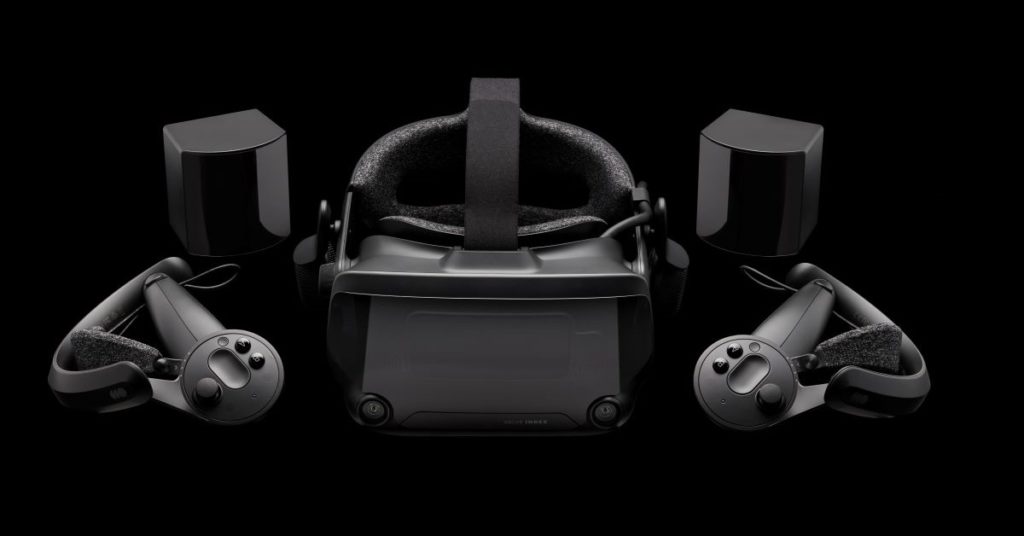
Photo credit: https://store.steampowered.com/valveindex
From budget range to some hardware that’s going to put a real dent in your wallet. The Valve Index is one of the greatest VR headsets on the market although the price might be off-putting to some. With a display resolution comparable to the Vive Pro, Quest, and Odyssey+ but paired with a 120Hz refresh rate, the Valve Index has some of the greatest visuals of any popular, commercially available VR headset (up to 144Hz in a currently unsupported, experimental mode). With a best-in-class FOV of 130°, the headset has virtually no discernible screen door effect. This is a huge leap forward as most headsets suffer some screen door effect or pixelation when examined up close.
The Valve Index is also very comfortable to wear as if the list of features weren’t enough. Making similar comparisons to other headsets, it is only a little heavier than the Rift S, but thanks to the form of the head strap, the weight is distributed more evenly around your head. Not to mention that it has excellent weight distribution and was constructed with carefully chosen, high-quality materials. The strap materials feel plush and professionally designed and never cause bother even after extended play sessions; they feel more like a cushioned extra-soft cloud other as opposed to ordinary foam padding.
The audio is yet another stand-out feature. Built-in near-field speakers are positioned adjacent to your ears, delivering amazing 3D audio similar to a lot of high-end headphones on the market today. The fact that the headphones are pressed against your ears is also great for those longer play sessions.
But forget the audio and the comfort, the Valve Index has become famous for the incredible technology invested in its controllers. The new controllers, which serve as both conventional motion controllers and hand/finger trackers, are simply top-tier levels of class. Because the Index controllers strap to your hands, you may completely relax your grasp without having to fear dropping them.
One of the unique characteristics of Valve’s Index is finger tracking, and there are many outstanding implementations now that more developers are finding themselves in possession of VR headsets. The true sign of a compliment is imitation. Meta and other industry leaders have adopted and mimicked the Index Controllers but none have surpassed the original and best.
Here is a more detailed view of The Valve Index specifications:
Display Two 1440×1600 LCD IPS Fast Switching Type Displays @ 80 Hz, 90 Hz, 120Hz, or 144 Hz
Sound Integrated Headphones 3.5mm audio jack, built-in dual microphone array
Controller Input Valve Index Controllers
Camera Front-facing 960×960 stereo cameras
Connectivity Display Port 1.2, USB 3.0 expansion port
Backward compatibility Supports HTC Vive and Vive Pro Controllers and HTC Vive and Vive Pro Base Stations
Pros:
High resolution: The Valve Index has a resolution of 1440 x 1600 pixels per eye, which is one of the highest resolutions available on a VR headset. This provides a sharp and clear image for the user.
Wide field of view: The Valve Index has a field of view of 130 degrees, which is wider than most other VR headsets. This helps to create a more immersive experience for the user.
High refresh rate: The Valve Index has a refresh rate of up to 144Hz, which is higher than most other VR headsets. This results in a smoother and more comfortable experience for the user.
Excellent tracking: The Valve Index has a room-scale tracking system that uses sensors and cameras to track the user’s movements. This results in very accurate and responsive tracking.
Comfortable to wear: The Valve Index has a comfortable head strap and adjustable lenses, making it comfortable to wear for extended periods.
Cons:
Expensive: The Valve Index is one of the most expensive VR headsets on the market, making it out of reach for many consumers.
Requires a powerful computer: To get the most out of the Valve Index, a powerful computer is required. This can be an added expense for those who don’t already have a suitable computer.
Heavy and bulky: The Valve Index is heavier and bulkier than many other VR headsets, which can make it less comfortable to wear for some users.
Limited software support: While the Valve Index is compatible with a wide range of VR software, it doesn’t have as much software support as some other VR headsets.
Cable management can be tricky: The Valve Index has a lot of cables, which can be difficult to manage and may get in the way during use.
Overall, the Valve Index is an amazing high-end VR headset with many impressive features. The only real downsides are the price and to cost of entry. Not only will the headset plus tracking gear set you back a cool $999 you’ll also need a rather expensive high-end PC just to get up and running. The results are worth it though if you can afford the asking price.
Varjo Aero
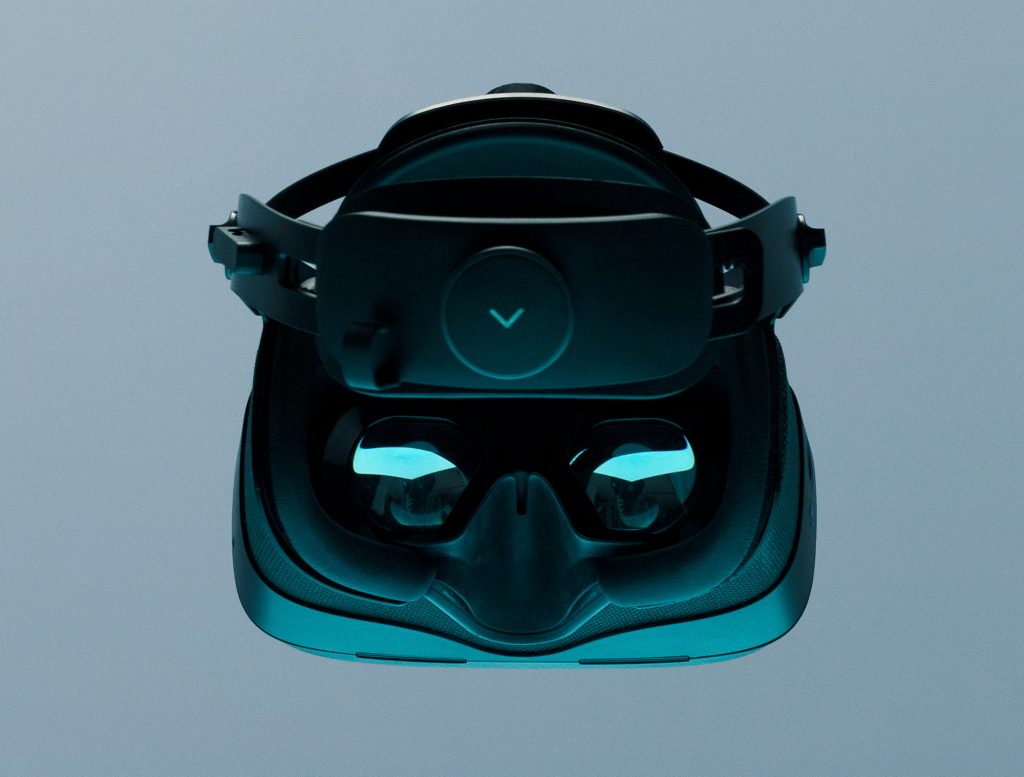
Photo credit: https://varjo.com/
So you thought the Valve Index was expensive? Ha! Varjo laughs in the face of Valve and doubles it. Currently selling for $1,990 it is considered one of the most expensive VR headsets available to consumers today. It is also considered the future proof and with the leaps in VR technology, that might be some comforting news for those willing to pay a hefty price upfront.
According to Varjo, the Aero is intended for professional VR, which means it is targeted at content producers that use 3D programs like Gravity Sketch in addition to training simulations like Microsoft Flight Simulator or the helicopter motion simulation platform from VRM Switzerland. The VR headgear relies more on SteamVR content, therefore these apps aren’t as frequently utilized as other business tools. The intentions for training and virtual simulation are only some of the appeals as this headset can be used for gaming also. The visuals speak for themselves and anyone lucky to use the headset will notice the difference immediately. Above all other headsets, it offers the clearest picture you can experience. Crystal clarity is hard to turn your back on, it’s very easy to become addicted.
Your hard-earned $1,990 will get you only the headset, a VR adaptor, in-ear headphones with a microphone, and a cleaning cloth. The Vive controllers and SteamVR Base Stations 2.0 or 1.0, which are very much needed, will add more cost on top of the already expensive headset. To put this into context, one Varjo Aero costs the same as six $299 Meta Quest 2 VR headsets. So you would want to be intensely committed to experiencing the pinnacle of VR at this kind of price level. Better get saving!
Aside from the crystal clear visuals, check out the full specifications below:
Resolution 2,880 x 2,720 (7.8MP) per-eye, mini-LED LCD (2x)
Refresh Rate 90Hz
Lenses Aspheric
Field-of-view (claimed) 134° diagonal, 115° horizontal (at 12mm eye-relief)
Optical Adjustments IPD (automatic motor driven)
IPD Adjustment Range 57–73mm
Connectors USB-C → breakout box (USB-A 3.0, DisplayPort 1.4)
Cable Length 5m
Tracking SteamVR Tracking 1.0 or 2.0 (external beacons)
On-board cameras 2x eye-tracking
Input None included (supports SteamVR controllers)
Audio 3.5mm aux port
Microphone None (supports external mic through aux port)
Pass-Through View No
Weight 487g + 230g headstrap with a counterweight
Pros:
High resolution: The Varjo Aero has a resolution of 1920 x 1080 pixels per eye, and it also features a “Bionic Display” that overlays additional pixels for a total resolution of 3840 x 2160 pixels per eye. This provides an incredibly sharp and clear image for the user.
Wide field of view: The Varjo Aero has a field of view of 100 degrees, which is wider than most other VR headsets.
Lightweight and comfortable: The Varjo Aero weighs only 595g and has a well-balanced design that makes it comfortable to wear for extended periods.
Easy to use: The Varjo Aero is designed to be easy to set up and use, with a simple plug-and-play setup process.
Compatible with many VR applications: The Varjo Aero is compatible with a wide range of VR applications and software, including those that support SteamVR and OpenVR.
Cons:
Expensive: The Varjo Aero is a high-end VR headset and is priced accordingly, making it out of reach for many consumers.
Limited field of view: While the Varjo Aero has a wider field of view than many other VR headsets, it still has a narrower field of view than some of its competitors.
Requires a powerful computer: To get the most out of the Varjo Aero, a powerful computer is required. This can be an added expense for those who don’t already have a suitable computer.
Limited software support: While the Varjo Aero is compatible with a wide range of VR software, it doesn’t have as much software support as some other VR headsets.
May not be suitable for gaming: The Varjo Aero is primarily designed for professional and enterprise use cases, and may not be the best choice for gaming.
Overall, the Varjo Aero is a premium VR headset with a wide range of note-worthy features, especially for business and professional use cases. Due to its high cost and lack of software support, it might not be the best option for everyone. If you’ve deep pockets and a passion for cutting-edge VR tech though then this is one of the best experiences you can have with a hefty price tag attached.
HP Reverb G2
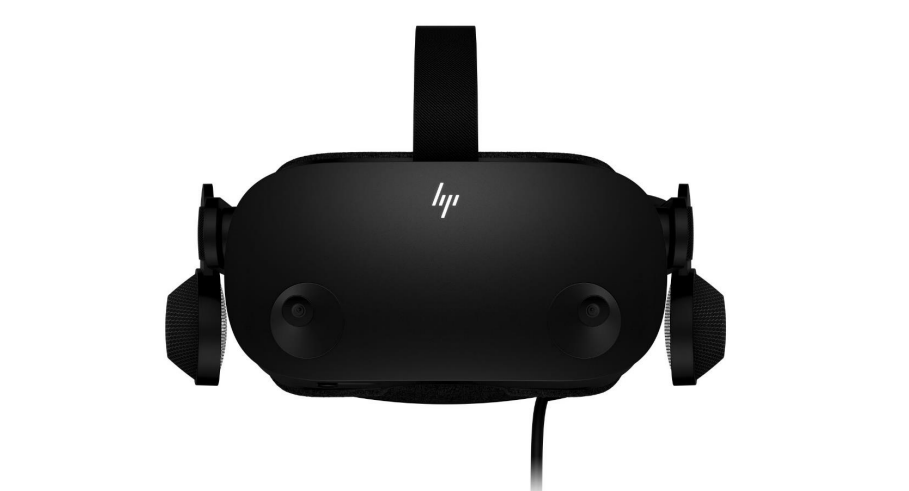
Photo credit: https://www.hp.com/
Let’s finish off the list with a slightly more price-conscious price. After all, we don’t necessarily want to re-mortgage our houses or sell our Grannies just to play VR (or do we?). The HP Reverb G2 sits in that comfortable middle spot. A straightforward, affordable VR headset, the HP Reverb G2 is comparable to the first Reverb released in 2019. The motion controllers on the headset are significantly more comfortable than those on its predecessor, and everything works with SteamVR much more consistently.
The G2 costs $599.99, which makes it less expensive than the $799 HTC Vive Pro 2 and the $999 Valve Index, although those headsets provide technical advantages that the Reverb does not. The Oculus Quest 2, which costs $399.99 still beats it hands down on almost every level as it is half as expensive as the G2 and can be used independently of a computer. So I would only recommend the HP Reverb G2 if you already own a Quest 2 or if you simply want a PC-only dependent experience. All that said, this is still a decent bit of kit for under 600 bucks.
Here are the full specifications for the Reverb G2:
Screen: Dual LCD 2.89’’ diagonal with Pulse Backlight technology
Resolution: 2160 x 2160 pixels per eye (4320 x 2160 pixels combined). RGB sub-pixels
Refresh rate: 90 Hz with recommended system specs
Field of view: 114 degrees, Fresnel-Aspherical
Tracking: 2 front-facing cameras and 2 side-facing cameras
Sensors: HP Reverb G2 inside/out 6 DOF motion tracking, gyroscope, accelerometer, and magnetometer
Eye adjust: 64mm +/- 4mm by hardware slider
Connections: DisplayPort™ 1.3, USB 3.0 type C, power adapter
Cables: One 6m 2-in-1 (DisplayPort™ 1.3 + USB 3.0 Type C®) cable and one power adapter are required. Mini
DisplayPort™ to Full size DisplayPort™ adapter, and USB-C® to A adapter
Mechanical ID: Replaceable face cushions.
Dimensions (without straps): 2.95×7.32×3.31in(75x186x84 mm)
Weight: 1.2lb (550g)
Pros:
High resolution: The HP Reverb G2 has a resolution of 2160 x 2160 pixels per eye, which is one of the highest resolutions available on a VR headset. This provides a sharp and clear image for the user.
Excellent tracking: The HP Reverb G2 uses inside-out tracking, which means that the headset’s cameras track the user’s movements. This results in very accurate and responsive tracking.
Comfortable to wear: The HP Reverb G2 has a comfortable head strap and adjustable lenses, making it comfortable to wear for extended periods.
Good audio quality: The HP Reverb G2 features integrated headphones that provide high-quality spatial audio, enhancing the overall immersive experience.
Large sweet spot: The HP Reverb G2 has a larger sweet spot than many other VR headsets, which means that the user can move their head around without losing focus.
Cons:
Requires a powerful computer: To get the most out of the HP Reverb G2, a powerful computer is required. This can be an added expense for those who don’t already have a suitable computer.
Limited software support: While the HP Reverb G2 is compatible with a wide range of VR software, it doesn’t have as much software support as some other VR headsets.
Somewhat heavy: The HP Reverb G2 is heavier than some other VR headsets, which can make it less comfortable to wear for some users.
Limited field of view: The HP Reverb G2 has a field of view of 114 degrees, which is narrower than some of its competitors.
Cable management can be tricky: The HP Reverb G2 has a lot of cables, which can be difficult to manage and may get in the way during use.
Overall – How to Choose the Right VR Headset for PC
The answer is simple, it all comes down to the type of experience that will satisfy you coupled with a cost price you’re comfortable paying. Out of the box, it’s hard to argue with the Meta Quest 2 as an overall great choice. Affordable, versatile, and provides a solid VR experience. For a first-time buyer, the Quest 2 is a must-purchase. However, if you’ve already dabbled in VR and are looking for peak VR, then the Varjo is the way to go. Yes, the price is ridiculous but the experience will simply blow your mind!
Whichever you choose, many amazing VR experiences are waiting for you! If you decide what headset to purchase but need to know if you’re PC is up to the task, then check out our guide for the best PC specifications for VR gaming here





